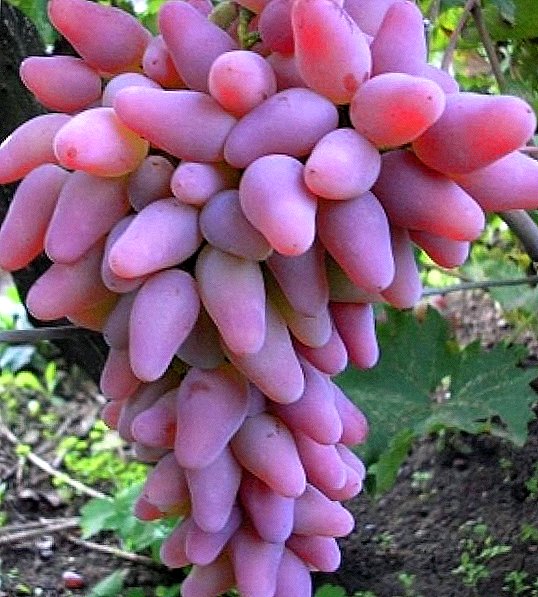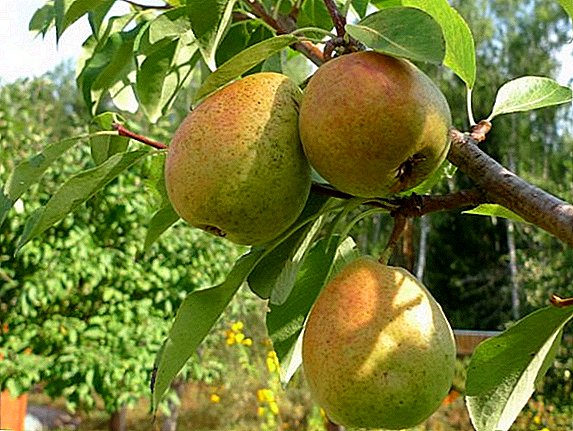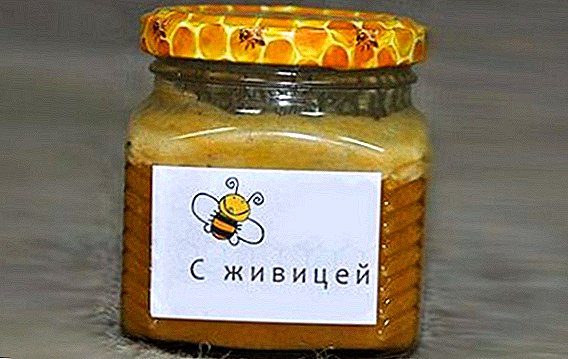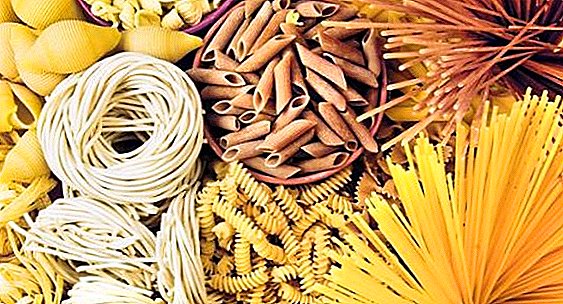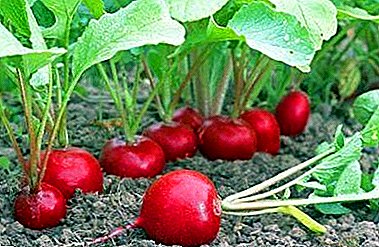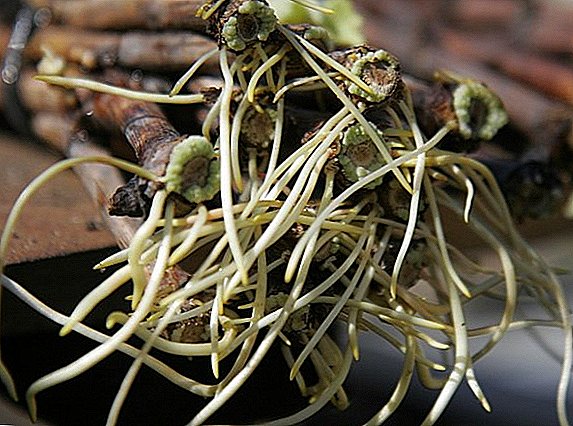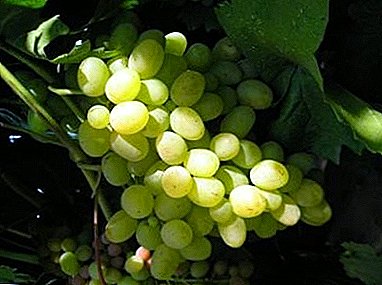
Apparently, it is not by chance that this grape variety got the name of such a bright historical figure as wife of the Prince of Kievwho took upon herself in widowhood all the government and charted the path to Orthodoxy before the baptism of Russia.
Appearance and Breeding History
The appearance of this elite table grape variety is associated with the all-consuming enthusiasm of the inquisitive experimenter from Novocherkassk. This is about Viktor Nikolaevich Krainov.
45 hybrid varieties became his grape masterpieces and among them Blagovest, Victor and Angelica. And Princess Olga was one of those whom the author was quietly proud, planning, however, to continue testing the variety for resistance to the misery of table grapes - cracking berries at full ripeness.
By the way: To prevent ripe berries from cracking, watering of bushes should be stopped already from the middle of summer, except for an unforeseen drought.
 In the process of hybridization, breeders usually solve the problem instilling new useful qualities from parent plants to a new seedling:
In the process of hybridization, breeders usually solve the problem instilling new useful qualities from parent plants to a new seedling:
- frost resistance
- yield,
- acceleration of ripening,
- increase in the mass of fruits,
- improving the shape of the grape brush,
- sugar content and flavors,
- resistance to diseases and pests.
Interesting: The process of obtaining a new hybrid may be hindered by self-pollination of the plant or pollination by pollen, which is undesirable.
As a result, a new variety, named so pompously, was inherited from hybrid parents:
- from Bogatyanovsky variety - high marketability and transportability; resistance to rot and downy mildew, sugar content of 19 g / 100 cm3;
- from variety Arkady (Nastya) - early ripening with strong growth; impressive mass of brushes (up to 2 kg) and the size of the berries in 15 gr.
This is how a new table white grape variety appeared, with the elasticity of the skin and juicy pulp, designed exclusively as a dessert, which gives pleasure to fresh consumption.
The same signs are different Pink, Great and Ataman.
Features
In addition to the obvious taste and high commodity attractiveness, table varieties, including Princess Olga, create additional concerns for the growers:
- due to the complexity of growing;
- low frost resistance;
- vulnerability to typical diseases;
- the need for additional nourishment for the bushes during the growth period;
- condition of mandatory seasonal pruning.
Important: Every autumn, table varieties are cut, starting from the top, into 6-8 holes (for fruiting).
 Dining varieties are distinguished by color:
Dining varieties are distinguished by color:
- white grapes;
- pink;
- red;
- the black.
Princess Olga refers to white varieties, although the color of the berries has a yellowish tint, and on the sunny side of the brush - pink tan.
Among the white varieties are known Lancelot, Bianka and Husayne White.
This characterizes this variety as hypoallergenic, preferred for use in the diet of children and pregnant women.
Variety description
The presented variety was created in a temperate continental climate, when an excess of heat is naturally combined with a lack of moisture. Therefore, the grapes of this variety feels great in the sun, protected from cold air currents and unsweetened areas of the garden.
Thermal-loving varieties belong to Hadji Murat, Gordey and Bazhen.
Princess Olga, with a certain care, pleases even the gardeners of Central Russia and Siberia.
Interesting: The winegrowers consider: the vine loves not the sweat, but the sun, the air and the earth.
Princess Olga:
- a variety for this plant species is tall (height over 2 m);
- with an average ripening period (slightly more than 3 months), right by mid-September;
- Shoots (vine) over time lumber and crack, forming an uneven surface; vine, cut for planting, called chubuk; The optimum size of a chubuk is 30 cm long, as thick as a pencil, with 2-3 reproductive buds;
- small green, with a light aroma, bisexual flowers are collected in inflorescences with male (stamens with anthers) and female function (pistil);
- fruits in the form of berries collected in a conical in shape and moderate in density brush; brush weight from 700 to 1000 grams. and more;
- grapes - large (up to 25 g.), barrel-shaped, yellowish, with elastic skin and medium density pulp; have a high content of sugars and ascorbic acid; a sign of full maturity - dull plaque;
- a grade is frost-resistant (to - 23 ° C);
- has a well-formed resistance to gray rot, oidium (ash), mildew (downy mildew);
poorly resistant to phylloxera; - tolerates transportation;
- can be stored until the New Year in a cool room with a separate brush, being suspended from the ceiling for the stem.
The Beauty of the North, Super Extra and Arched are even more frost resistant.
A photo
Photo grapes "Princess Olga":



Characteristics and processing methods

- The main advantage - in the chemical composition of berries juice, containing:
- vitamins A, C, groups B, E, H, PP and beta carotene;
- the main set of trace elements (potassium, iron ... sulfur, fluorine, iodine, silicon, etc.);
- organic acids;
- 0.6% protein, which indicates its low calorie content;
- natural phytoalexin - grape flavonoid resveratrol, acting as an antioxidant.
Interesting: One kilogram of grapes replenishes 30% of the daily energy intake of an adult.
- There is a great range of diseases that frighten civilization, in which grapes play the role of "health berries": from anemia to oncology and Alzheimer's disease.
- I use grains of berries in cosmetics and cosmetology; grape leaves - for healing wounds and spiro procedures.
- With a large crop, table grapes can be processed for short-term storage:
- in juice;
- compotes;
- jam, jam, marmalade;
- berries can be dried;
- cook stuffed cabbage leaves and seasonings.
Carefully should treat this product people with high acidity and diabetics.
Healing qualities are also possessed by the Russian Concord, the Perfect Delight and the Black Panther.
Diseases and pests
- The main threat to this grape variety is phylloxera infection, which is carried out exclusively by means of transportation. Therefore, the main rule for gardeners interested in the cultivation of the vine, is:
- purchase of planting material only from reliable suppliers in specialized nurseries;
- do not trust the advice of uncompetent people;
- check the integrity of the packaging of the pipe when receiving the order;
- conduct quarantine activities;
- engage in the prevention of disease.
- Treatment of pests begin only when they appear, if possible, replacing chemicals with proven folk remedies. For example, a glass of tea fungus diluted in compost in a 1: 7 solution for spraying will protect the plant from fungal diseases during the growing season and good feeding.
- To increase the yield of the bush during autumn pruning, it is necessary to remove up to 90% of the new growth, thereby depriving possible pests from the wintering place.
- Do not neglect the control that the soil was always saturated with phosphorus and potassium at the rate of 15g. on 100gr. ground.
Do not neglect preventive measures against such widespread diseases of the grape as mildew and oidium, all kinds of rot. No less dangerous are anthracnose, bacteriosis, rubella and bacterial cancer.
The Bible claims that the first plant that helped mankind survive after the flood was grape shoots. Find and in your garden a place for this strategic reserve of vitality.


